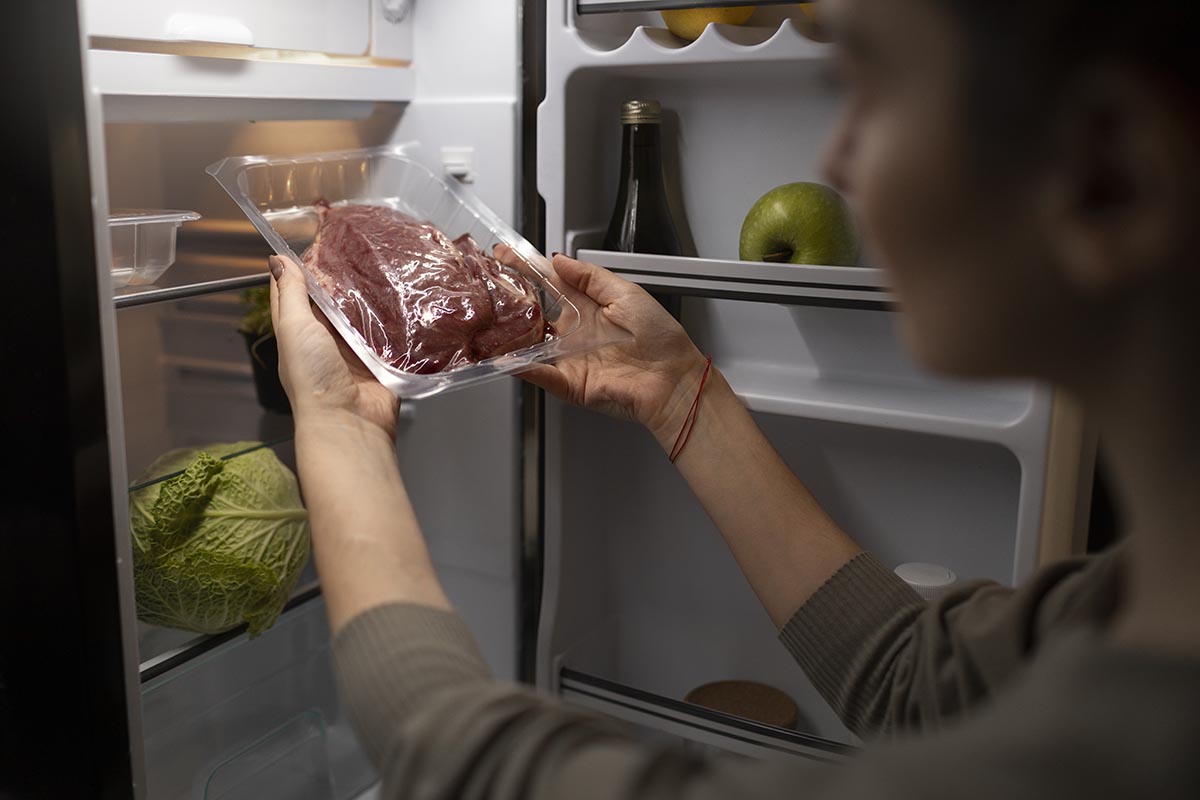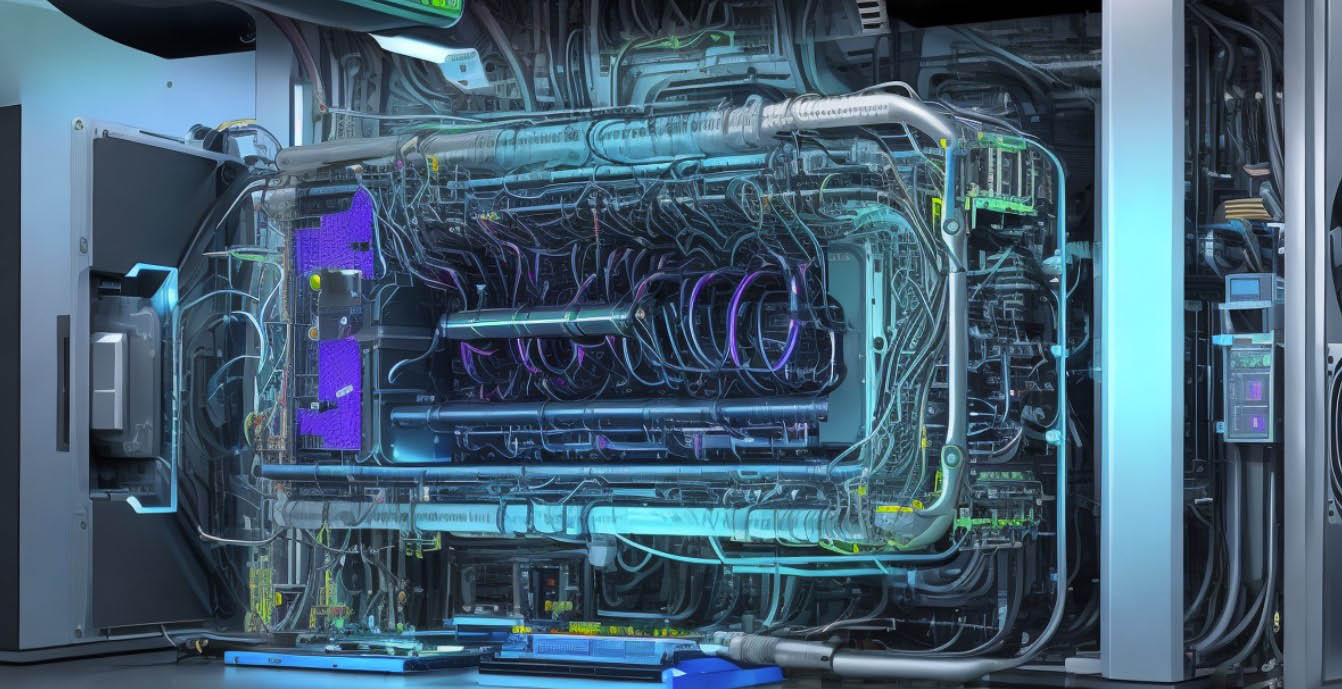Magnetic Adiabatic Cooling: The Way in Eco-Friendly Refrigeration Technologies
The world is changing rapidly, and so are our needs. With the rise in global temperatures and climate change, there is an increasing demand for sustainable technologies to help us reduce our carbon footprint. Refrigeration is one area that has been in focus, and developing eco-friendly refrigeration technologies has become the need of the hour. One such technology that has emerged as a game-changer in this field is Magnetic Adiabatic Cooling.
Magnetic Adiabatic Cooling, a magnetic refrigerator, is an innovative cooling technology that uses magnetic fields to cool down our refrigeration systems. It is energy-efficient, eco-friendly, and has the potential to revolutionize the way we think about refrigeration. In this article, we will explore the various aspects of this technology, how it works, its advantages over traditional refrigeration methods, and its potential applications in different industries. We will also discuss its environmental benefits and the challenges it faces, along with the latest developments in the field. So, let’s dive in and explore the exciting world of Magnetic Adiabatic Cooling!
What is Magnetic Adiabatic Cooling?
Eco-friendly refrigeration technology is on the rise as consumers become increasingly aware of the environmental impact of traditional cooling methods. Among the latest innovations in this area is magnetic adiabatic cooling, which offers an energy-efficient and sustainable solution for cooling needs. This technology is rapidly gaining popularity, particularly in the industrial sector, where energy consumption is high and environmental conservation is a critical concern.
Magnetic adiabatic cooling is a type of magnetic cooling system that relies on the magnetocaloric effect to produce cooling. The system involves using magnetic fields to manipulate the magnetic properties of certain materials, resulting in a temperature change. This cooling process is known as the adiabatic cooling cycle.
| Energy-efficient cooling | High energy consumption |
| Eco-friendly refrigeration technology | Environmental impact |
| Reduced carbon footprint | Increased carbon emissions |
Magnetic adiabatic cooling boasts several advantages over traditional refrigeration methods. Besides being energy-efficient and eco-friendly, it also offers superior cooling efficiency, which translates to business cost savings. Unlike conventional cooling systems, which rely on refrigerants that can harm the environment, magnetic cooling systems use solid magnetic materials that do not pose any environmental risks. This makes them a perfect fit for businesses looking to reduce their carbon footprint and adopt sustainable practices.
The technology’s application is diverse, ranging from commercial and residential refrigeration to industrial cooling needs. For instance, medical, aerospace, and electronics industries require high-precision cooling, and magnetic adiabatic cooling can easily deliver that. The technology is already in use in several reputable establishments, and the results have been impressive, further advancing eco-friendly refrigeration.
As the world becomes more environmentally conscious, magnetic adiabatic cooling presents itself as a promising solution for meeting cooling needs while reducing carbon emissions. It has already demonstrated its effectiveness and potential to replace traditional cooling methods, and with continued research and development, its application will expand even further.
How Does Magnetic Adiabatic Cooling Work?
Magnetic adiabatic cooling is a revolutionary technology that offers an eco-friendly and energy-efficient alternative to traditional refrigeration methods. It operates on the principle of magnetocaloric effect, which involves the heating and cooling of certain materials in response to magnetic fields.
The magnetic refrigeration process consists of four main steps:
- The magnetic field is applied to the magnetic material, causing it to become magnetized.
- The magnetized material, such as a refrigerator compartment, is brought into contact with the object to be cooled.
- The magnetic field is then removed, causing the material to lose its magnetization and release heat.
- A heat exchanger captures the released heat and removes it from the system, leading to adiabatic cooling of the target object.
This adiabatic cooling cycle repeats itself, resulting in a continuous and energy-efficient cooling process. Compared to conventional refrigeration systems that rely on compressors and refrigerants, magnetic adiabatic cooling requires no harmful chemicals and consumes less energy.
Thermodynamics is crucial in magnetic adiabatic cooling, as it governs the heat transfer between the magnetic material and the cool object. By optimizing the thermodynamic parameters, such as temperature and pressure, the efficiency and effectiveness of the cooling system can be increased.
“Magnetic adiabatic cooling leverages the magnetocaloric effect to provide an eco-friendly and energy-efficient cooling solution with no harmful chemicals and lower energy consumption.”
Advantages of Magnetic Adiabatic Cooling
When it comes to refrigeration technologies, magnetic adiabatic cooling stands out for its many advantages. One of the key benefits of this innovative system is its superior cooling efficiency. Unlike traditional refrigeration methods, which rely on mechanical compressors and refrigerants, magnetic cooling systems use magnetic fields to generate cooling effects. As a result, they can achieve lower temperatures with greater efficiency and precision, making them ideal for a wide range of applications.
Reduced energy consumption is another major advantage of magnetic adiabatic cooling. Magnetic cooling systems significantly reduce energy usage and associated costs by eliminating the need for mechanical compressors and refrigerants. This results in lower utility bills but also helps reduce refrigeration processes’ carbon footprint, contributing to a more sustainable future.
Magnetic adiabatic cooling also has a positive environmental impact. By doing away with refrigerants that can harm the ozone layer and contribute to global warming, this eco-friendly technology aligns with the goals of sustainability and environmental conservation. As more businesses and industries adopt magnetic cooling systems, we can expect to see a significant reduction in the negative environmental impacts of refrigeration processes.
Applications of Magnetic Adiabatic Cooling
Magnetic adiabatic cooling has a wide range of applications in various industries, especially refrigeration. This innovative technology is gaining recognition for its eco-friendliness and energy efficiency, making it an ideal cooling solution for both commercial and residential use.
Refrigeration Industry
The refrigeration industry is one of the most significant industries where magnetic adiabatic cooling finds its application. This technology provides the industry with a green cooling solution that reduces energy consumption and overall operating costs while maintaining temperature control. Magnetic adiabatic cooling is ideal for commercial refrigeration, including food storage, transporting temperature-sensitive products, and more. This technology’s efficiency has enabled companies operating in the refrigeration industry to lower their carbon footprints.
Commercial and Residential Use
Magnetic adiabatic cooling is an excellent alternative to traditional cooling methods for commercial and residential use. This technology enhances air quality, reduces energy consumption, and minimizes noise levels. Magnetic adiabatic cooling provides a cost-effective and eco-friendly cooling solution in commercial establishments such as office buildings, shopping malls, or hotels. For residential use, this technology can be installed in homes, apartments, or condominiums, providing energy-efficient and sustainable cooling systems.
Magnetic Adiabatic Cooling vs. Conventional Refrigeration
When it comes to refrigeration, the traditional methods that we have been using for decades are not as efficient as they could be. On the other hand, magnetic adiabatic cooling offers several advantages that make it a better alternative to conventional refrigeration methods. Let’s take a closer look at some of the key differences between the two:
| Use of refrigerants that are harmful to the environment | Use of non-toxic and environmentally friendly materials |
| Energy-intensive cooling cycle | Adiabatic cooling cycle that requires less energy |
| Produces greenhouse gases that contribute to climate change | Produces no greenhouse gases, reducing carbon footprint |
As the table shows, magnetic adiabatic cooling has several advantages over traditional refrigeration methods, particularly regarding energy efficiency and environmental impact. By using this technology, we can significantly reduce our carbon footprint and move towards more sustainable cooling solutions.
It is important to note, however, that magnetic adiabatic cooling is still a relatively new technology, and there are limitations to its application. For example, manufacturing is currently more expensive than traditional refrigeration systems, making it less viable for some commercial applications.
Despite these challenges, magnetic adiabatic cooling is a promising technology that has the potential to revolutionize the refrigeration industry. By continuing to invest in research and development, we can further improve its energy efficiency and cost-effectiveness, making it a practical solution for many applications.
Recent Developments and Innovations in Magnetic Adiabatic Cooling
One of the most significant advantages of magnetic adiabatic cooling is its potential for continued improvements and advancements. Ongoing research and development efforts are focused on making magnetic cooling systems more efficient and cost-effective, making them an even more attractive option for eco-friendly refrigeration technologies.
Thanks to the technology’s scalability and versatility, magnetic cooling systems are being considered for various applications. Advances in magnetic materials and refrigeration cycle design have been instrumental in making this a reality.
Advancements in Magnetic Materials
One of the most promising research areas in magnetic adiabatic cooling is the development of advanced magnetic materials that exhibit better magnetocaloric effects, allowing for greater cooling efficiency. Recent advancements in materials science have led to the development of new alloys and composites that exhibit a stronger magnetocaloric effect, allowing for improved cooling performance. This could have significant implications for developing smaller, more efficient magnetic cooling systems in the near future.
Refrigeration Cycle Design
Another area of focus is the redesign of the adiabatic cooling cycle to improve its efficiency. Researchers are exploring the use of multi-stage cycles, hybrid cycles, and hybrid magnetic refrigeration cycles to improve the cooling capacity and efficiency of the system. These novel approaches to refrigeration cycle design could lead to more significant energy savings and a smaller environmental footprint.
Industry Adoption
The increasing focus on eco-friendly refrigeration technologies has led to greater industry adoption of magnetic adiabatic cooling systems. As the technology continues to improve and become more cost-effective, more companies are expected to adopt magnetic cooling as a viable alternative to traditional refrigeration methods. This could have a significant impact on energy consumption and greenhouse gas emissions, making a positive contribution to environmental conservation efforts.
“The potential of magnetic adiabatic cooling is enormous. As the technology advances, we are likely to see more widespread adoption and a significant impact on the refrigeration industry. The continued research and development of eco-friendly refrigeration technologies like magnetic cooling will benefit us all in the long run.”– Eco-Friendly Refrigeration Expert
Magnetic Adiabatic Cooling: A Sustainable Solution for the Future
Magnetic adiabatic cooling represents a major step towards achieving sustainable refrigeration technologies. This revolutionary technology offers various green cooling solutions that help save energy and preserve the environment.
Investing in eco-friendly refrigeration systems like magnetic adiabatic cooling can lead to several environmental conservation benefits. These include reducing greenhouse gas emissions, decreasing carbon footprint, and promoting sustainable cooling practices.
Sustainable refrigeration technologies
Sustainable refrigeration technologies enable businesses and consumers to impact the environment while reducing operating costs positively. Magnetic adiabatic cooling is a perfect example of such a solution, and it has gained significant attention from companies and individuals in recent years.
By implementing sustainable refrigeration technologies, businesses can reduce their dependence on traditional cooling systems that consume large amounts of energy. This saves money and contributes to environmental conservation by reducing carbon emissions and promoting sustainable operations.
Green cooling solutions
Green cooling solutions like magnetic adiabatic cooling are an environmentally friendly alternative to traditional refrigeration systems. These solutions use natural elements to provide cooling, thereby reducing the dependence on synthetic refrigerants that can harm the environment.
By utilizing green cooling solutions in commercial and residential applications, we can create a more sustainable future by reducing greenhouse gas emissions and preserving natural resources. This will benefit the environment and promote energy-efficient practices that can help save money and resources in the long run.
Environmental conservation
Environmental conservation is a critical aspect of promoting sustainable development. By adopting eco-friendly cooling solutions like magnetic adiabatic cooling, we can contribute to a cleaner and greener environment by reducing our carbon footprint and preserving natural resources.
In addition to environmental conservation benefits, magnetic adiabatic cooling can also promote sustainable development by reducing energy consumption and saving money on utility bills. By embracing this technology, we can create a more sustainable future that benefits both individuals and society as a whole.
Magnetic cooling case studies: Real-world examples of successful applications for energy-efficient cooling
While magnetic adiabatic cooling is a relatively new technology, several successful case studies demonstrate its practical applications in achieving energy-efficient cooling. Let’s take a closer look at some real-world examples of magnetic cooling implementations.
The Fraunhofer Institute for Energy Economics and Energy System Technology
The Fraunhofer Institute for Energy Economics and Energy System Technology, located in Kassel, Germany, installed a magnetic refrigeration system for its research laboratory in 2013. The system, which uses gadolinium plates to create a cooling effect, has a temperature range of -50 °C to 10°C and significantly reduces energy consumption while increasing cooling performance.
The Department of Energy’s Ames Laboratory
The Department of Energy’s Ames Laboratory in Iowa, USA, uses a magnetic refrigeration system to research superconducting materials. The system, developed by Astronautics Corporation of America, uses water-based fluids to avoid toxic coolants and reduce energy consumption. The Ames Laboratory estimates that the magnetic system uses 25-30% less energy than traditional compressor-based systems.
The Cooltech Applications Manufacturing plant in Val-de-Reuil, France
The Cooltech Applications Manufacturing plant in Val-de-Reuil, France, is using magnetic refrigeration technology to produce commercial refrigerators and freezers. The plant uses the magnetic cooling system developed by Cooltech Applications and has received several awards for its innovative and sustainable refrigeration solutions.
Challenges and Future Prospects of Magnetic Adiabatic Cooling
Despite the many benefits of magnetic adiabatic cooling, the technology still faces certain limitations that hinder its widespread adoption and implementation. One of the primary limitations of magnetic cooling is its high cost of production and maintenance, making it less accessible to small-scale businesses and households.
However, ongoing research and development efforts are focused on overcoming these challenges, with innovations aimed at reducing costs and improving magnetic cooling systems’ efficiency. In the future, advancements in materials science and thermodynamics could lead to more affordable and energy-efficient magnetic cooling solutions.
Another critical aspect that could influence the industry’s adoption of magnetic adiabatic cooling is increased awareness and education among consumers and businesses about the benefits of eco-friendly refrigeration technologies. As more people become conscious of the importance of sustainability, the demand for green cooling solutions is likely to grow, creating a more favorable market for magnetic cooling systems.
Future Developments
The future prospects of magnetic adiabatic cooling are promising, with ongoing research and development efforts focused on enhancing the technology and expanding its applications. Some potential future developments in the field include:
Developing more efficient and cost-effective magnetic cooling materials;
Scaling up magnetic cooling systems for larger industrial applications;
Integrating magnetic cooling with renewable energy sources such as solar and wind power;
Exploring the use of magnetic cooling in other industries, such as microelectronics and space exploration.
Magnetic Cooling Limitations
In addition to cost and accessibility, there are other limitations to magnetic adiabatic cooling that need to be addressed. One such limitation is the relatively low cooling power density of magnetic cooling systems compared to traditional refrigeration methods. This means that magnetic cooling may not be suitable for applications that require high cooling power, such as large-scale industrial refrigeration.
Another limitation is the need for a strong magnetic field, which could pose safety risks and require specialized equipment for handling. Finally, the complex nature of magnetic adiabatic cooling systems can make it challenging to design and troubleshoot, necessitating specialized expertise and knowledge.
Despite these limitations, magnetic adiabatic cooling remains a promising technology with significant potential for revolutionizing the refrigeration industry and promoting sustainable cooling solutions. As research and development efforts continue, it will be interesting to see how this innovative technology progresses and adapts to the evolving needs of the industry.
Eco-Friendly Refrigeration Technologies: Environmental Benefits of Magnetic Adiabatic Cooling
Magnetic adiabatic cooling is a highly sustainable solution that offers a range of environmental benefits. It significantly reduces the carbon footprint, and its eco-friendly refrigeration technology promotes sustainable cooling solutions. By adopting this technology, we can take significant steps toward mitigating the impact of climate change and promote energy-efficient cooling practices.
The key environmental benefits of magnetic adiabatic cooling include:
| Benefit | Description |
| Reduced carbon footprint | The use of magnetic adiabatic cooling reduces carbon emissions, helping to combat climate change and support environmental conservation efforts. |
| Sustainable cooling solutions | Magnetic adiabatic cooling technology is eco-friendly, reducing the dependence on traditional cooling systems that rely on harmful substances such as CFCs and HCFCs. This makes it a sustainable alternative for the future. |
| Eco-friendly refrigeration | Magnetic adiabatic cooling promotes green cooling solutions, improving the overall environmental impact of refrigeration practices. It helps businesses and homeowners reduce their carbon footprint and contribute to a more sustainable future. |
By embracing magnetic adiabatic cooling, we can take a significant step towards creating a greener and more sustainable future. This innovative technology offers superior cooling capabilities while also being energy efficient and eco-friendly, making it a promising solution for our refrigeration needs.
Eco-Friendly Refrigeration Technologies: Conclusion
Magnetic adiabatic cooling has the potential to revolutionize the refrigeration industry by providing an eco-friendly and energy-efficient alternative to traditional refrigeration methods. As we continue to face the challenges posed by climate change and the urgency to reduce carbon footprints, embracing sustainable cooling solutions such as magnetic adiabatic cooling becomes crucial.
Going Green with Magnetic Adiabatic Cooling
We can significantly reduce energy consumption and mitigate our environmental impact by adopting magnetic adiabatic cooling. This innovative technology offers a sustainable solution that aligns with our efforts towards environmental conservation and green living.
A Promising Future
The ongoing research and development efforts in magnetic adiabatic cooling will continue to enhance the technology and open up new opportunities for its implementation. We can expect to see the widespread adoption of this technology in various industries, including commercial and residential refrigeration.
Join the Green Movement
It’s time to embrace eco-friendly refrigeration technologies and take the necessary steps towards a greener future. By incorporating magnetic adiabatic cooling into our lives, we can minimize our carbon footprint and contribute to the preservation of our planet for future generations. Let’s join the green movement and positively impact the world.
FAQ
Eco-Friendly Refrigeration Technologies: What is Magnetic Adiabatic Cooling?
Magnetic adiabatic cooling is an eco-friendly refrigeration technology that utilizes magnetic fields to achieve energy-efficient cooling. It is a system that offers superior cooling capabilities while minimizing environmental impact.
How does Magnetic Adiabatic Cooling work?
Magnetic adiabatic cooling works by utilizing the principles of magnetism and thermodynamics. It involves a magnetic refrigeration process and an adiabatic cooling cycle, where the system’s magnetic fields are manipulated to control the temperature and achieve efficient cooling.
What are the advantages of Magnetic Adiabatic Cooling?
Magnetic adiabatic cooling offers several advantages over traditional refrigeration methods. It provides superior cooling efficiency, reduces energy consumption, and has a positive environmental impact by minimizing greenhouse gas emissions.
What are the applications of Magnetic Adiabatic Cooling?
Magnetic adiabatic cooling has various applications in different industries. It can be utilized in the refrigeration industry for commercial and residential use, offering energy-efficient cooling solutions.
How does Magnetic Adiabatic Cooling compare to conventional refrigeration?
When compared to conventional refrigeration methods, magnetic adiabatic cooling has several advantages. It is more energy-efficient, resulting in reduced energy consumption and environmental impact. It is a greener and more sustainable option for cooling needs.
What are the recent developments and innovations in Magnetic Adiabatic Cooling?
There are ongoing research and development efforts aimed at improving magnetic adiabatic cooling technology. Innovations are being made to enhance its efficiency, expand its applications, and make it even more environmentally friendly.
How does Magnetic Adiabatic Cooling contribute to sustainability?
Magnetic adiabatic cooling is a sustainable solution for the future. By reducing energy consumption and minimizing environmental impact, it supports the shift towards sustainable refrigeration technologies and promotes environmental conservation.
Can you provide examples of Magnetic Adiabatic Cooling implementations?
Certainly! There are real-world examples of magnetic adiabatic cooling implementations, including successful case studies and examples of energy-efficient cooling. These examples demonstrate the practicality and effectiveness of this innovative technology.
What are the challenges and future prospects of Magnetic Adiabatic Cooling?
While magnetic adiabatic cooling offers significant benefits, there are also current limitations that need to be addressed. However, with ongoing advancements and industry adoption, the future prospects of this technology are promising in terms of further development and widespread implementation.
What are the environmental benefits of Magnetic Adiabatic Cooling?
Magnetic adiabatic cooling provides several environmental benefits. It helps to reduce carbon footprints, supports sustainable cooling solutions, and contributes to eco-friendly refrigeration practices. By embracing this technology, we can make a positive impact on the environment.



















